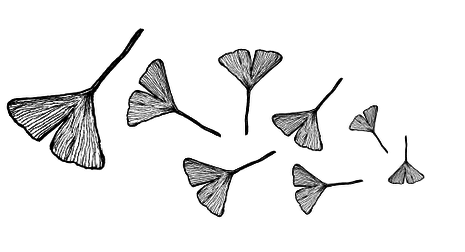Plant extinction: the Ginkgo
Starting with the Ginkgo tree, Nicholas Koenig kicks off a column involving stories of the complex and tentacular world of plant extinction

When reflecting on the first article for the new column, I thought there would be no other way to begin than with the poster-child of plant extinction: the Ginkgo tree. While not fully extinct, the species came close!
Known scientifically as Ginkgo biloba, the word ′Ginkgo’ has its roots in Japanese, roughly equating to “silver apricot”, referencing its nut-like cone produced for reproduction. The species name ′biloba’ has Latin origins with ′bi’ meaning two and ′loba’ referencing the lobes of the leaves (the flap-like projections spreading from the middle). When combined, these give a quick description of the species: a “silver apricot” bearing plant with “two-lobed” leaves.
The Ginkgo tree is related, evolutionarily, to other cone-bearing species like Pines and Hemlocks (both Christmas tree-like species). But the Ginkgo has continued on an evolutionary branch becoming more and more isolated over time, currently the only species in its entire order of the Ginkgoales. To give some context, our species of Homo sapiens is in the order Primates, ranging from lemurs and gorillas to humans and baboons — imagine being the sole survivor in such an extensive assemblage! But how did the species survive its relatives’ evolutionary trajectory?
“The species cultivated a relationship with humans prospering in cityscapes and landscapes worldwide, ultimately avoiding total extinction”
The solution involved creating a millenia-long-mutualism with humankind in regions of China. While humans cultivated the tree to be ornamental, natural populations slowly died out. Currently, there is an ongoing debate whether there are any “natural” populations of Gingko in existence. The story is one of hope in that the species cultivated a relationship with humans, prospering in cityscapes and landscapes worldwide, ultimately avoiding total extinction .
Truly embodying the title of a living fossil, the Ginkgo tree and its genome have shown an evolutionary trend not set for extinction in a biological-sense. Through biogeographical modelling coupled with genetic sequencing, researchers have found a path for the tree to coexist and participate in various ecosystems. These studies have, and will, continue to be vital to the conservation community for salvaging plant species heading towards human-induced extinction.
Another benefit of Ginkgo is its medicinal value, elicited through one of the plant’s chemicals. Known as EGb761, this chemical has shown to have profound implications on brain function, including increasing cognitive function for people with mild dementia.
In addition to the two mentioned, the contributions Ginkgo has made to our lives and conservation efforts is part of a long list, and is simply one species in an even longer list of multifaceted flora. The protection of plant biodiversity and all life is crucial for the preservation of the world we create with other beings as well as continuing to listen to the narratives told by non-human species, a common theme in plant extinction that will be further explored.
In future articles in this column, I will be traversing our complex ecosystems to focus on plant species with less fortunate histories and multispecies entanglements that remind us of our sometimes doomful habitats. This is not to foster guilt for what we are doing wrong but, rather, appreciate the beauty of the natural world and remind us what is at stake.
 Interviews / You don’t need to peak at Cambridge, says Robin Harding31 December 2025
Interviews / You don’t need to peak at Cambridge, says Robin Harding31 December 2025 News / Downing investigates ‘mysterious’ underground burial vault 29 December 2025
News / Downing investigates ‘mysterious’ underground burial vault 29 December 2025 News / Unions protest handling of redundancies at Epidemiology Unit30 December 2025
News / Unions protest handling of redundancies at Epidemiology Unit30 December 2025 Lifestyle / Ask Auntie Alice29 December 2025
Lifestyle / Ask Auntie Alice29 December 2025 Features / ‘Treated like we’re incompetent’: ents officers on college micromanagement30 December 2025
Features / ‘Treated like we’re incompetent’: ents officers on college micromanagement30 December 2025









